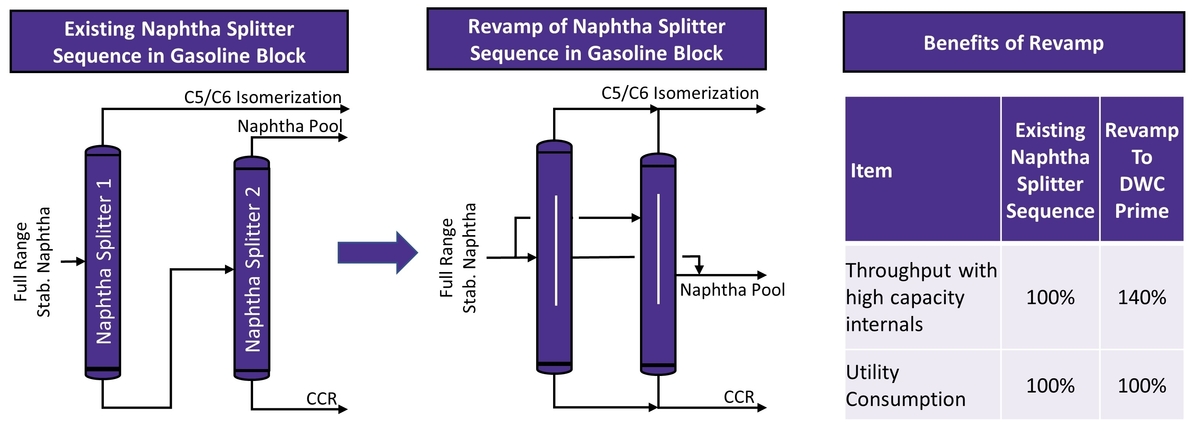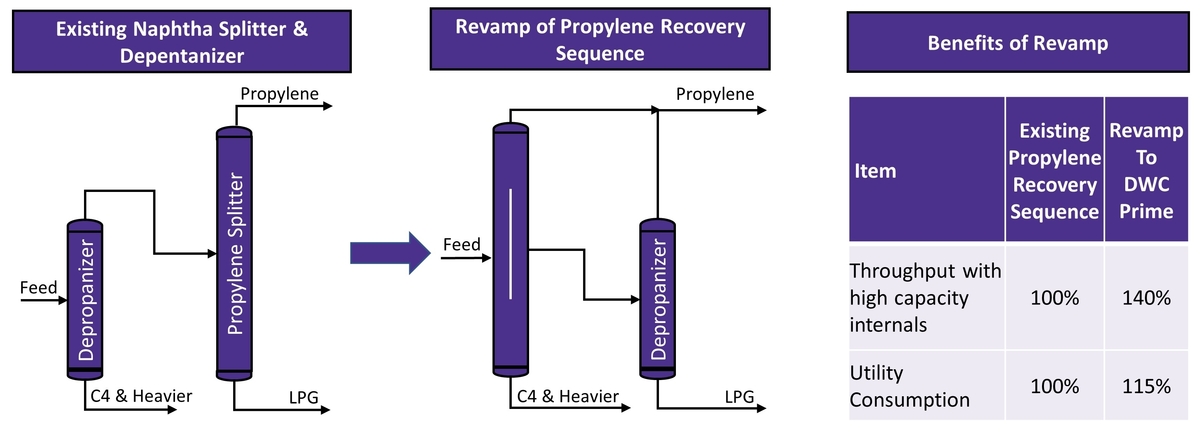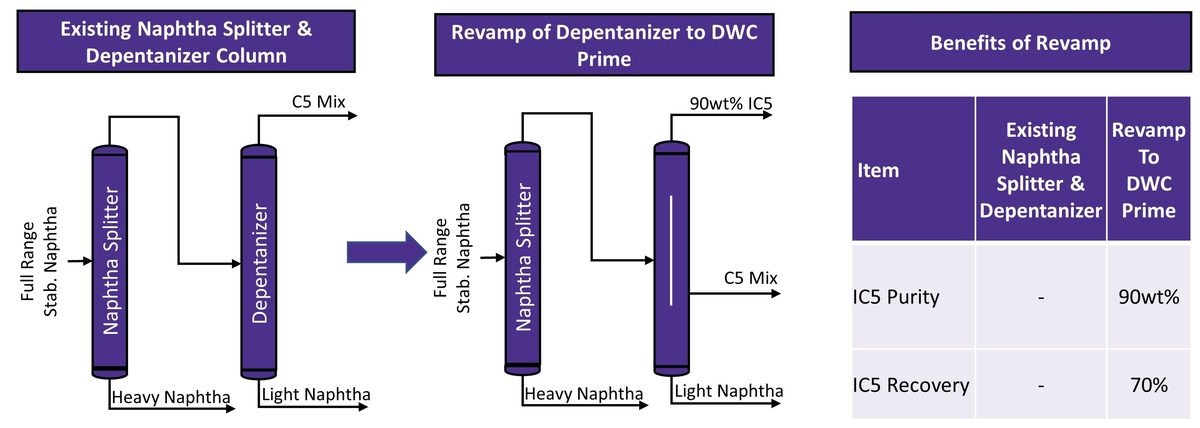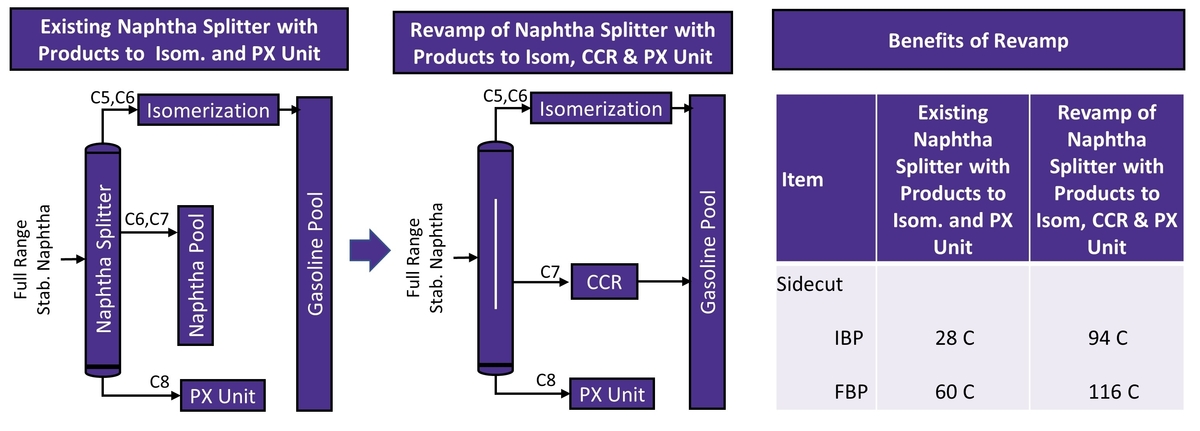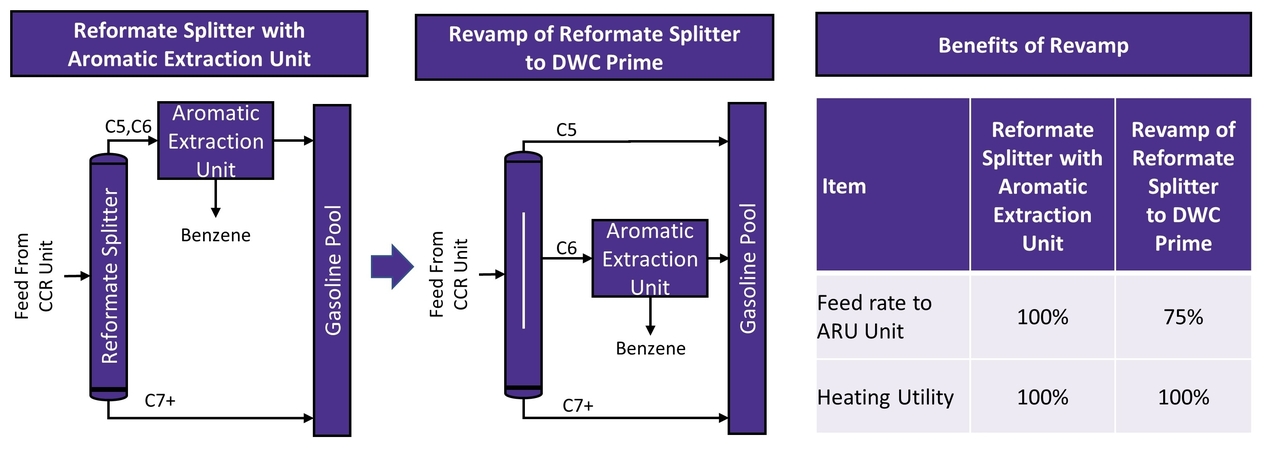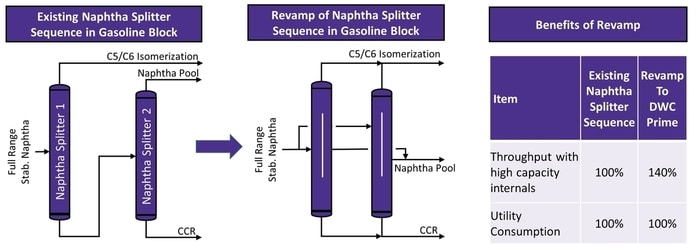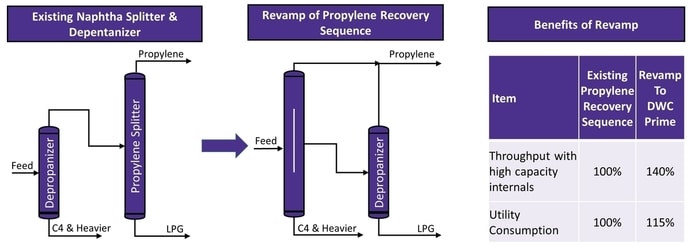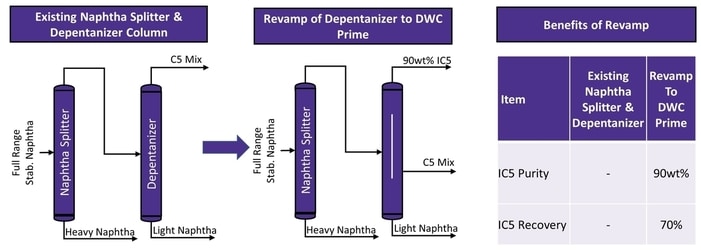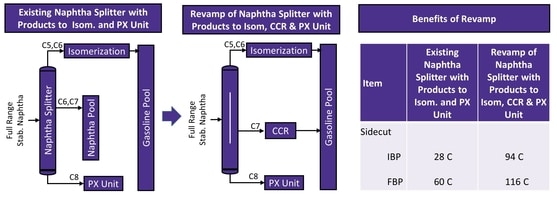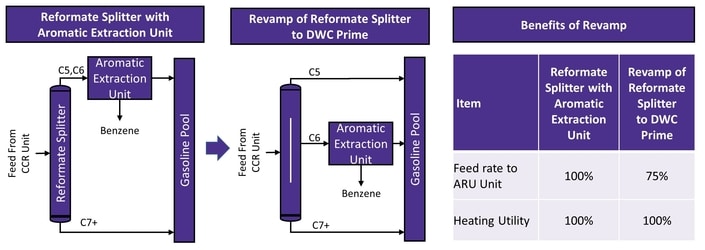Our refinery process optimization techniques aims to improve the overall profitability. We optimize the requirements of better product specifications, decreased energy consumption or capacity augmentation through robust simulation models and engineering. We design practical solutions to save 20-50% in CAPEX and OPEX. Some examples of process and energy optimization taken up by Team DWCI are summarized below:
Capacity increase by optimizing vapor liquid traffic in distillation columns
Our technical solutions provide significant improvement in product specifications and throughput increase of commonly used distillation sequences.
Naphtha splitter sequence: The revamp to DWC Prime provides a capacity increase of more than 40% over that achieved by high capacity internals. The major modifications are limited to column internals. There would be minor or no modifications to the associated equipment ( reboiler, condenser, pumps) with the column.
Depropanizer / Propylene splitters: Besides a 30% increase in throughput, DWC revamp provides higher propylene recovery and lower RVP of bottoms C4 product.
Increase margins by separating more valuable product streams
DWC Prime provides an opportunity to produce more valuable cuts in existing columns.
Deisohexanizer column in isomerization unit: This column separates light and heavy isomerate along with a recycle stream to isomerization reactor. The revamp of DIH can produce a more valuable fourth cut of food grade hexane. Read more…
Naphtha splitter / Depentanizer: In an existing configuration of Naphtha splitter followed by a depentanizer, DWC Prime revamp would produce an additional product, Isopentane of 90% purity. This stream has a RON of 90 and can be blended into premium gasoline.
Optimize process integration between refinery and petrochemicals
DWC Prime boosts profitability by improving product specifications. With new units installed over a period of time disposal of some refinery streams becomes problematic. One such example would be a naphtha splitter in a gasoline complex with top product (C5/C6) as feed to isomerization unit and bottoms (C8 & Heavier) to Para Xylene Unit. The disposal of midcut (C6,C7) is a problem. The revamp to Dividing wall column ensures a cleaner midcut of C7 components which is suitable as feed to a CCR unit.
Debottleneck downstream units by optimizing feed rate & composition
Benzene content in gasoline pool is typically controlled using an aromatic extraction unit (AEU) or a benzene saturation unit. These units are installed downstream of a reformate splitter. The top C5-C6 cut from reformate splitter is feed to the AEU Unit. DWC revamp of a reformate splitter produces a concentrated C6 mid-cut, thereby reducing the feed rate to AEU by at least 25%.
Optimize energy in refinery processes
DWCI has specialty in providing advanced energy reduction techniques used in the industry.
Heat pump assisted distillation: In this system the overhead vapor is pressurized by a compressor to the point where it is condensed at an increased temperature which will supply the heat required in the reboiler. Typical application include columns with close boiling separations like propylene splitters.
Multi effect distillation: The enthalpy from the vapor of one column is used as the heating source for the reboiler of the other column. DWC Prime enhancements coupled with the savings from multi effect distillation is a powerful medium of energy reduction especially in regions with high utility costs.
